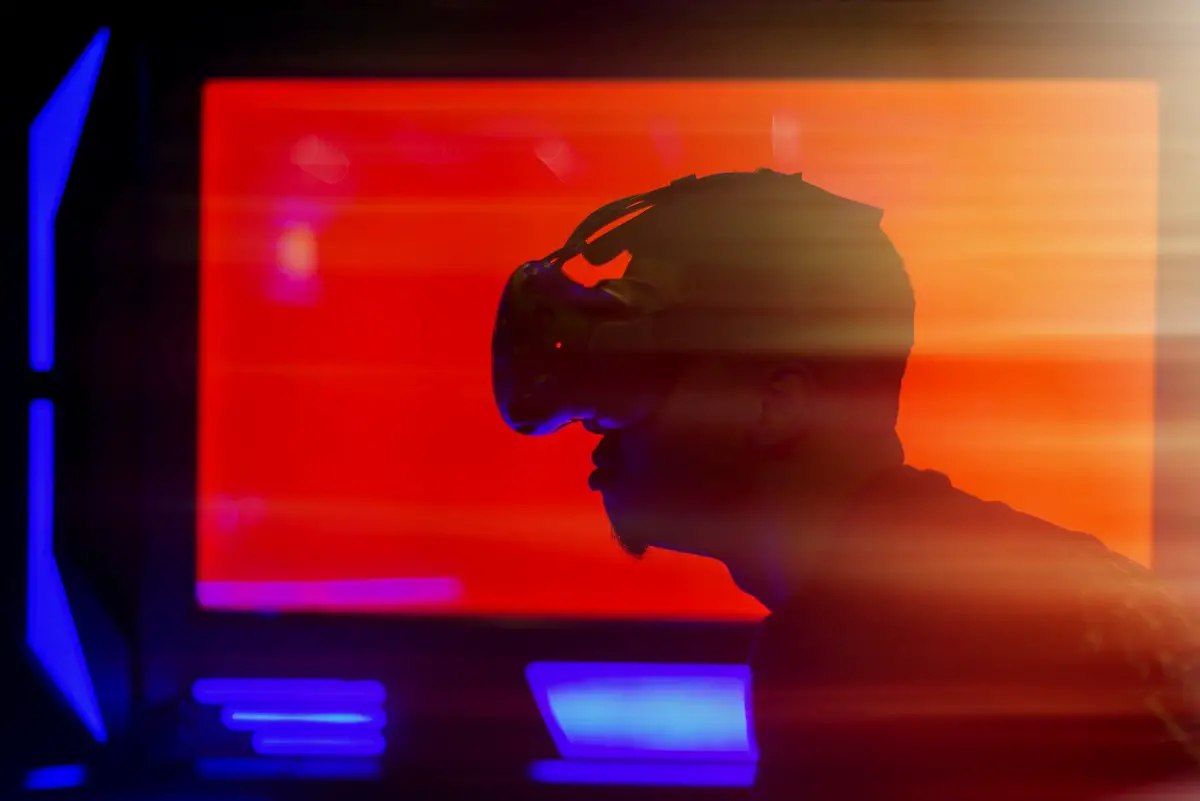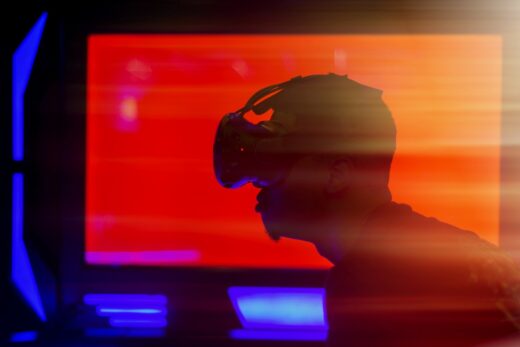How VR is changing entertainment and retail industry advice, Virtual Reality Guide, Technologies
How VR Is Changing the Entertainment and Retail Industry
23 Nov 2020
In the entertainment and retail spheres, virtual reality or VR technologies are actively used. Let’s take a look at some of the most interesting uses for VR, and see how virtual reality technologies are changing entire industries.
How shopping malls are using VR
Virtual reality turns shopping and entertainment centers into a destination point – a place where you want to come not only for shopping, but also to have a good time. The mall where VR entertainment is installed attracts several thousand people every day who come for new experiences. This increases the mall awareness and also increases the average time a visitor spends here.
The demand for VR technologies in the entertainment and retail industry is driven by global trends: Living Digital Lives and Experience Economy. People spend more and more time in the digital world, and they no longer pay for the fact of owning something, but for the sensations they receive. Virtual reality responds to both trends, which is why it is so popular.
The Dubai Mall in Dubai has opened a virtual reality park where tourists from all over the world come to play cult computer games and not controlling the character, but playing instead. The park offers to rob a bank, shoot zombies in the Walking Dead, drive a supercar in Need for Speed, and experience unforgettable sensations in non-gaming reality – for example, paragliding from the Burj Khalifa – the tallest building in the world, which is also located in Dubai.
Virtual Reality Technology
Land-based casinos also offer VR capabilities. For example, some London gambling halls can already be entered using virtual glasses and everyone can join the game with real people. Michael Boettcher, the Shangri La founder, mentioned that this opportunity is especially interesting for young people.
Virtual parks in the United States are usually associated with a superhero theme – users are offered to be Batman or Iron Man and save the world from crime. Also, American shopping malls open parks with the theme of famous films, such as Jurassic Park or Star War.
The largest VR park in Europe is located in the Belgian city of Mouscron. Like most European parks, it is not tied to movie characters. Instead, the park is focused on team building: almost all game entertainment is team building.
Spanish park Aspro has created a virtual reality cinema in the Blue Planet aquarium. With the help of virtual reality technologies, visitors to the park are transported to a giant aquarium, swim among the fish and interact with them.
Virtual reality not only allows you to swim with fish, but also enhances the taste of fish dishes. Tokyo restaurant Tree by Naked has combined virtual reality technology and gourmet cuisine. A restaurant guest puts on a VR helmet – and light shows, colorful visual stories about exquisite gastronomy, interactive elements of interaction with space appear before their eyes. Sounds and smells whet your appetite and make you write reviews that Tree by Naked is a truly unique place. All the tables of the restaurant seat only eight people and you have to book then two or three months in advance.
In what areas of retail is virtual reality used?
It doesn’t matter what you sell, you can use VR technology with any product. This has already been proven by companies from a wide variety of retail segments: Ikea, Audi, Topshop, Snapchat. Technology allows you to visit a fitting room, arrange furniture at home, or hold the latest iPhone in your hands without leaving the couch.
The main task of virtual reality in retail is to give the buyer a product before buying and do it as quickly as possible. When a girl can choose the perfect makeup in half an hour using a mobile application, it is clear that she will buy shadows and lipstick in the store that released this application.
The use of VR by individual stores is turning into a necessity rather than a competitive advantage, and VR technology in entire malls is a growing trend. To attract more visitors, mall owners attract tenants who use virtual reality in their retail outlets, as well as invest in VR themselves.
How VR technologies affect the retail market
Forbes research says that 40% of shoppers are willing to overpay if they get the opportunity to test it in virtual reality before buying. A store that offers this opportunity increases not only profits, but also the level of customer satisfaction. And a satisfied customer tends to come back for new purchases.
BizReport conducted a survey, where 61% of buyers admitted: the presence of VR technologies in a store stimulates them to buy more than a seller’s consultation, a discount or an enticing advertisement. Consumers surveyed said that after testing the product in virtual reality, they buy even what they did not plan.
VR increases user engagement, builds trust and loyalty to a particular store or mall. Centers that offer a VR experience that is still new to most consumers are attracting significantly more customers. According to CB Insights, 57% of mall visitors who have been to a VR amusement park or other VR experience will return to the mall to shop. On average, with the opening of VR entertainment, the flow of new visitors to the shopping center increases by 1.2 – 1.5 times, depending on the size of the VR park.
How VR Is Changing Entertainment and Retail Conclusion
Virtual reality technologies, says Darren Keane, Shangri La CEO, stimulate demand, facilitate the choice and purchase of things, create interesting events and provoke public attention. Companies that promote products using augmented reality and come up with new ways to use VR technology will become major players in the retail and entertainment markets. Shopping malls are attracting shoppers with new VR parks and are transforming from storefronts into entertainment venues.
Comments on this guide to How VR is changing entertainment and retail industry article are welcome.
Building
Architecture Articles

image courtesy of article provider
VR – Virtual Reality Trends
Virtual reality – beyond plain visualisation
Great working relationship with real estate virtual assistant
Comments / photos for the How VR is changing entertainment and retail industry advice page welcome.






